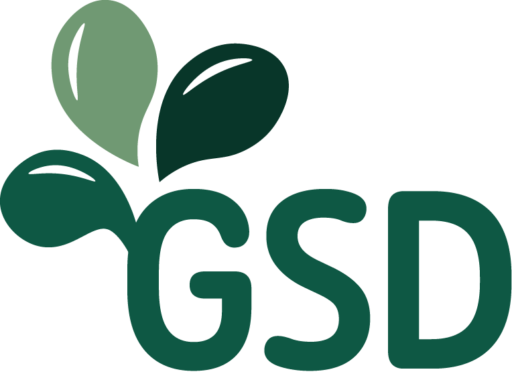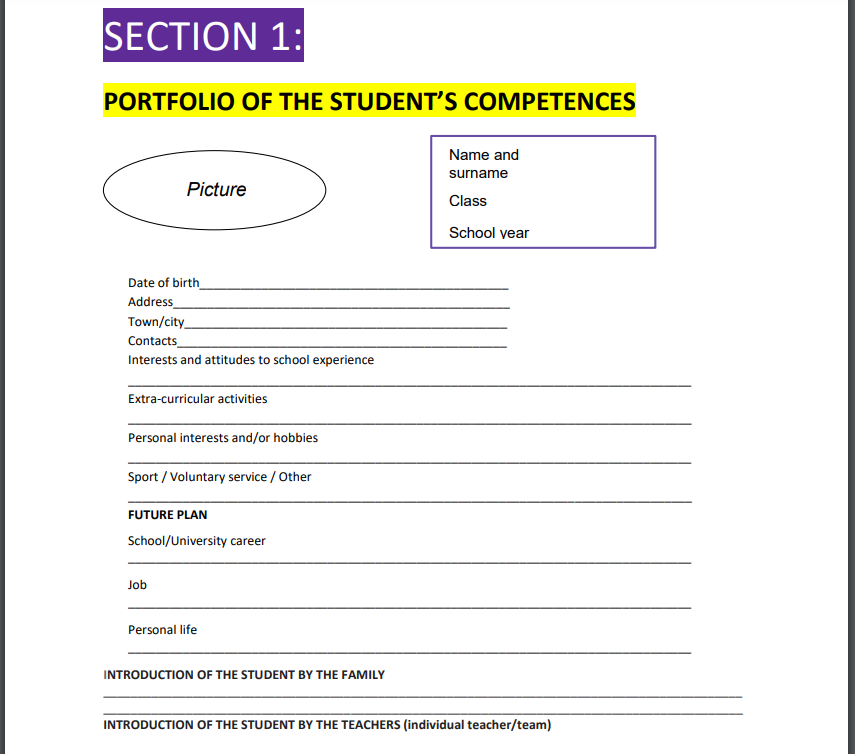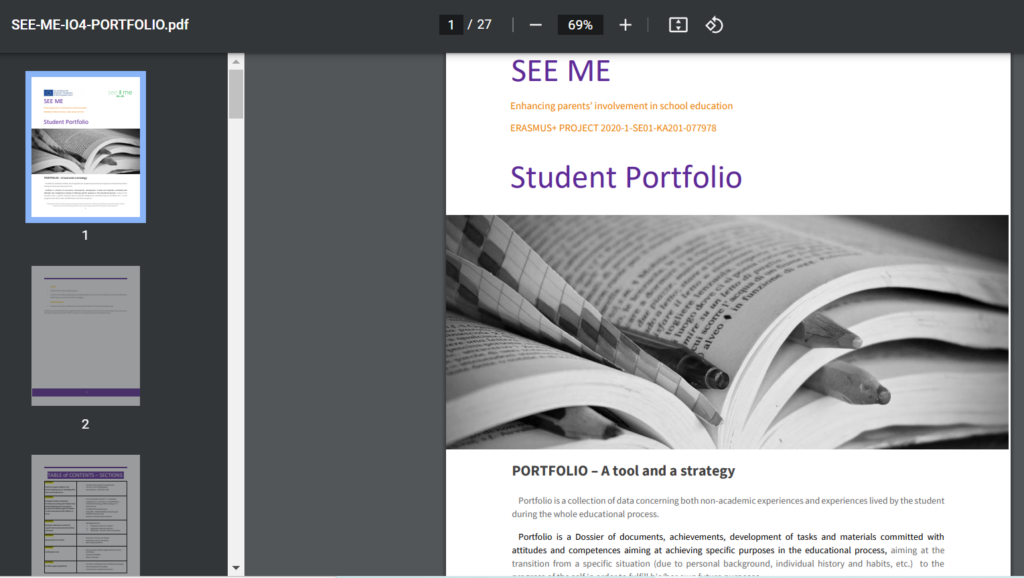
The Student Portfolio – a ‘bridge’ between school and family – is conceived as a method to tackle and reduce disparities in accessing and engaging with formal and non-fromal education of children, and as a practical portfolio for students to be used at home as well, in order to enhance communication among children-parents-teachers.
Main objectives of the Student Portfolio are: -to identify and control the student’s learning success; -to identify and support learning achievement; -to determine whether the students’ knowledge and skills are consistent with the educational standards.
The portfolio is a physical collection of student work (e.g. written assignments, written works, lab work, tests, detailed answers to questions, etc.) and academic achievements (e.g. awards, honors, medals, certificates, assessments, and teacher’s recommendations). In this way, a portfolio can teach students to take more ownership and responsibility for the learning process. In addition, it will assist teachers in monitoring and evaluating learning progress over time.
- More Info
- Gallery
- Contact
Challenge Tackled
- Lack of parents’ involvement and awareness in the development and learning children.
Target group, beneficiaries or clients
- Parents from disadvantaged groups (parents from disadvantaged socio-economic backgrounds (learning difficulties, health issues, social and economic struggles, disadvantaged background, parents from a migrant background (immigrants, refugees), Roma people, rural people;
- Teachers, professionals who work with children from disadvantaged groups;
- School professionals working with children from disadvantaged groups;
- Children from disadvantaged groups.
Solution
- Filling out and evaluating the Student Portfolio parents develop parental attitudes ad competences.
Innovation
- Student portfolios can improve communication between teachers and parents. A portfolio can also help parents become more informed about the education and learning progress of their children, what is being taught in a particular course, and what students are doing and learning in the classroom. Also, when parents are more informed about and engaged in their child’s education, they can play a more active role in supporting their children at home, which could have a beneficial effect on academic achievement and long-term student outcomes.
Unique Selling Point
- Parental attitudes and mind-sets; increasing student’s skill and knowledge at home.
Impact
- Involvement, integration, support, better communication, academic achievement and long-term student outcomes.
Feasibility/Transferability
- Possibility to use in Folkuniversitetet with students’ parents;
- Opportunity to implement to schools, municipalities and/or regional authorities.
FOLKUNIVERSITETET
Bergsbrunnagatan 1, 753 23 Uppsala, Sweden
Phone: +46704541464
E-mail: anastasiia.tsaruk@folkuniversitetet.se
Contact Person: Anastasiia Tsaruk
www.folkuniversitetet.se



